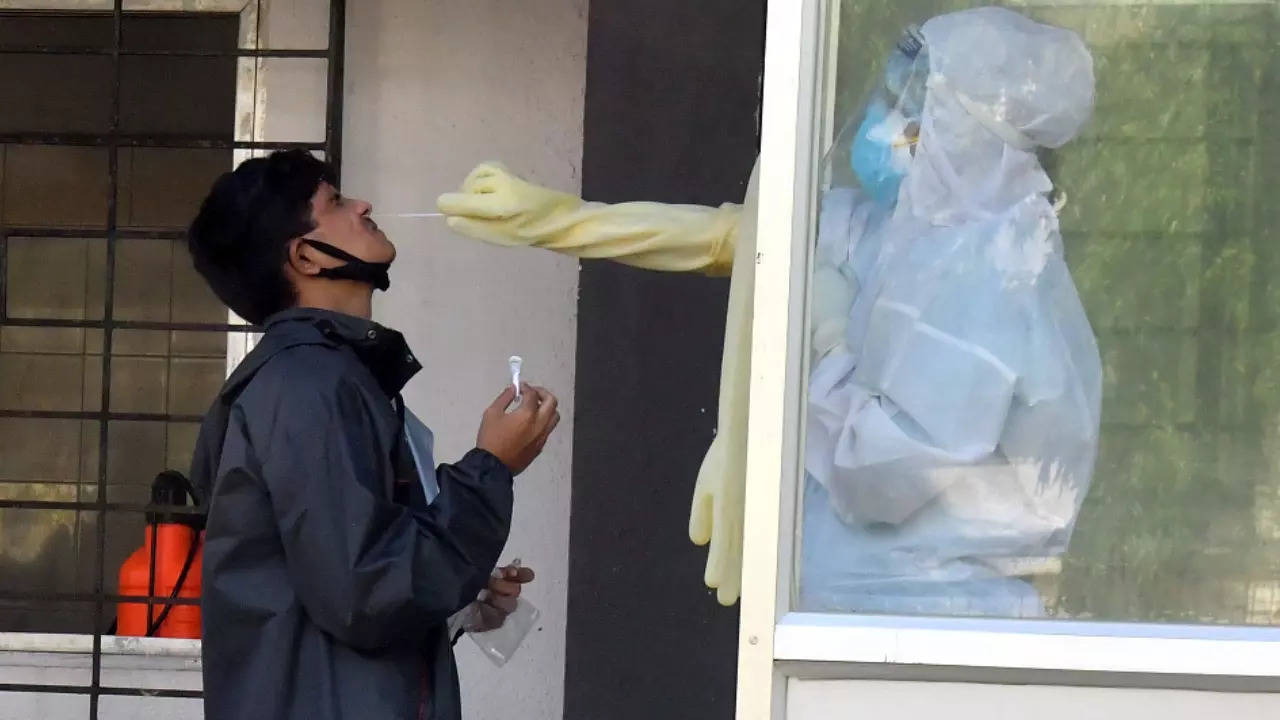Covid cases double in 9 days in India; 19 more sequences of JN.1 found

PUNE: Insacog, the central government forum of labs, has found 19 sequences of BA.2.86 (nicknamed Pirola) descendant JN.1 – one from Maharashtra and 18 from Goa – after the subvariant was first detected in Kerala a few days ago, while India’s active Covid case count more than doubled in the past nine days from 938 on December 11 to 1,970 on Tuesday.
Experts flagged this subvariant, believed to have been causing a rise in Covid casesin various countries, including the US.Dr Rajeev Jayadevan, co-chairman, National Indian Medical Association (IMA) Covid Task Force, told TOI: “JN.1 is the fastest growing sublineage in western nations. The waste water surveillance in these nations has shown extremely high loads of this variant, reflecting the volume of infections in the community.”
Dr Jayadevan said wastewater surveillance from Tata Institute for Genetics and Society (TIGS), Bengaluru, had shown a spike. “This typically precedes regional surges by approximately 10 days, but detecting cases depends on how efficiently testing is done for people having compatible symptoms,” he added.According to an Insacog official, a recent fatality in Kerala resulted not only from Covid but also from a combination of pre-existing health conditions.
“The 18 JN.1 samples from Goa were cluster cases from a single event, a recent film festival. The Maharashtra JN.1 case was found at the Goa-Maharashtra border…There has not been any clinical implication of it so far. We don’t think that there is anything to worry about at the moment. The rise in Covid cases in India is a seasonal/winter phenomenon,” the Insacog official said.
India on alert as JN.1 Covid variant emerges: Kerala sees surge with 1,828 active cases
Vinod Scaria, genome sequencing expert and researcher at Mumbai’s Vishwanath Cancer Care Foundation, said JN.1, a sublineage of Omicron, was discovered by researchers monitoring the emergence of lineage BA.2.86 in August 2023.
The Insacog dashboard, updated on Tuesday, showed a total of 20 JN.1 sequences. Of them, 18 were from Goa and one each from Kerala and Maharashtra. There was also a BA.2.86 sequence from Goa.
“This reveals a whole new variant profile compared to the large number of XBB sequences reported by Insacog India in April 2023. Thus, after a gap of seven months, Covid is rising again in India. This also means that the present wave of infection in India is driven by a completely new subvariant, which originated from BA.2.86 – first noted in Scandinavia in July 2023,” Dr Jayadevan said.
